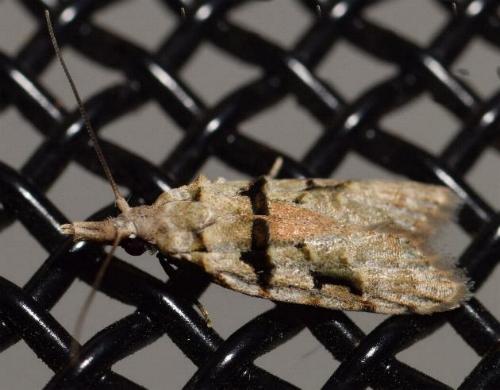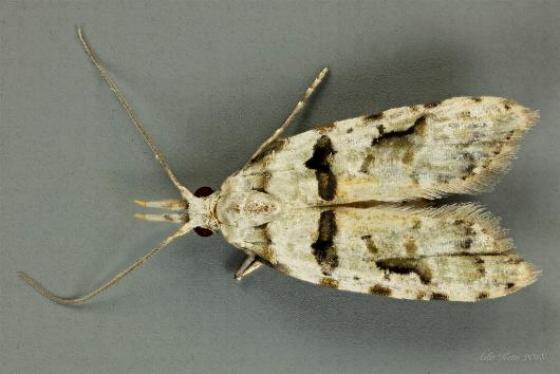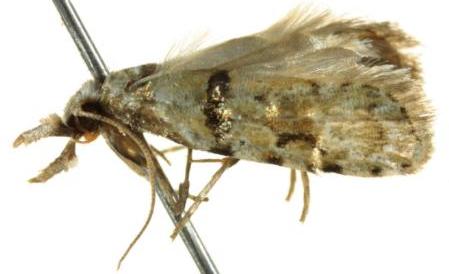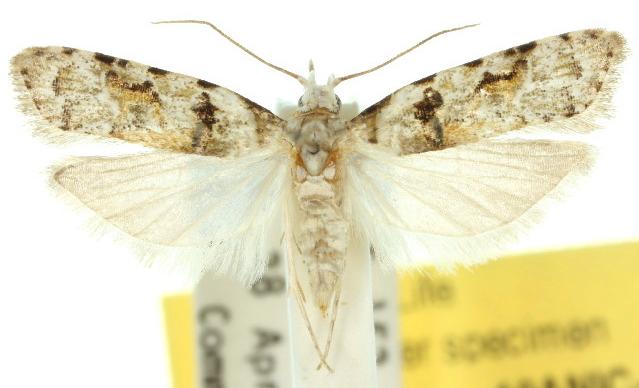
| Australian Guava Moth CARPOSINIDAE, COPROMORPHOIDEA | (donherbisonevans@yahoo.com) and Stella Crossley |

(Photo: courtesy of
Dianne Clarke,
Maleny, Queensland)

| Australian Guava Moth CARPOSINIDAE, COPROMORPHOIDEA | (donherbisonevans@yahoo.com) and Stella Crossley |

(Photo: courtesy of
Dianne Clarke,
Maleny, Queensland)
The Caterpillars of this species are pests, boring into the fruit and seeds of many fruit trees, including

The adult moth has off-white forewings, each with a scattering of grey-brown dots, and several dark marks along the costa, and two irregular dark blotches in the middle. The males also have a half-naked raised membrane running along the middle of the wing The hindwings are white. The body is orange, but covered in white hair. It has a wingspan of about 1.5 cms.

The species occurs in
as well as in Australia in

Further reading :
Edward Meyrick,
Descriptions of Australian Micro-lepidoptera. VI. Tortricina,
Proceedings of the Linnean Society of New South Wales,
Series 1, Volume 6, Number 3 (1881), p. 701.
 caterpillar |  butterflies |  Lepidoptera |  moths |  caterpillar |
(written 28 December 2018, updated 10 April 2025)